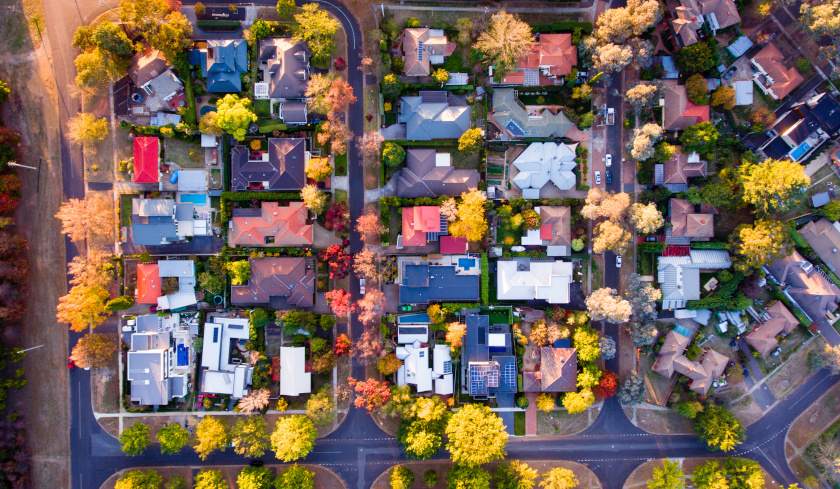Invest
KPMG predicts timing for Melbourne, Sydney market recoveries
House prices in Sydney and Melbourne are set to plateau by the end of 2019, with recovery set to occur in the next two years, a new report has suggested.
KPMG predicts timing for Melbourne, Sydney market recoveries
House prices in Sydney and Melbourne are set to plateau by the end of 2019, with recovery set to occur in the next two years, a new report has suggested.

According to KPMG’s latest housing affordability report released today, although both capital cities’ house prices will continue to fall this financial year, the markets will avoid going into free fall, with Melbourne set to see growth again in 2020 and Sydney in 2021.
The big four auditor suggested that the “push and pull” of market factors such as the amount of dwellings, population growth and investor borrowing will follow the previous trajectory of market falls and revert to growth conditions.
“Our housing update shows that the tougher regulatory actions and taxation measures by both federal and state governments we identified last year have had a significant effect,” said Brendan Rynne, KPMG chief economist.
“There has been a falling-away in foreign interest, notably from China, and lending to domestic buyers has got stricter, while housing supply has increased. This is why prices have declined, but we believe that process will reach its peak over the next few months and then go into reverse later this year.”

Mr Rynne noted that the likely reason Melbourne’s real price decline has been half of that in Sydney’s throughout 2019 was due to the incredible growth experienced in the Habour City that took house prices far above “fair value”. As such, Sydney’s larger drop will result in the Melbourne property market recovering sooner than its counterpart.
“In our 2017 paper, KPMG assessed that by the end of FY2016, house prices in Sydney were more overvalued in relation to their ‘fair value’ compared to Melbourne, and therefore they were expected to fall by a greater extent. That has proved to be the case,” he said.
“Two years on, a relatively high level of increases in the stock of residential dwellings in both Sydney and Melbourne, a decline in financing for housing investors, and the tightening in APRA lending standards have all combined to drag house prices downwards.”
Mr Rynne said such changes to housing finance have particularly taken a toll on the Sydney market, while both cities have been significantly impacted by sharp declines in residential foreign investment.
“But what we have also found is that dwelling prices in Sydney are much more sensitive to the demand created by domestic investors than dwelling prices in Melbourne. It is predominately this factor that is causing the difference in expected dwelling price growth between the two markets,” he said.
“[Alongside this], Foreign Investment Review Board (FIRB) data shows that just under 13,200 residential properties in Australia were purchased by foreigners during 2016-17, which represents a significant fall compared to the 40,100 residential properties sold to foreigners during the previous financial year.”

Property
North platform adds household reporting feature to boost adviser efficiency
AMP's North platform has launched consolidated household reporting across multiple client accounts, helping financial advisers streamline their client review processes. Read more

Property
What Adds The Most Value To Properties?
Wondering how to up the value of your property? Properties are worth a lot of money in general, but there’s always a way to maximise value. The good news is that most of the things you can do to ...Read more

Property
Centuria reports strong growth in alternative real estate sectors for FY24
Centuria Capital Group has reported significant growth in alternative real estate sectors for the 2024 financial year, driving stable performance and increased guidance for FY25. Read more

Property
How to leverage equity in your home for investment or renovation
Home equity, the value of your property minus any debts owed, is a powerful financial resource many homeowners in Australia can utilize to further their financial goals. Whether you're looking to ...Read more

Property
Exploring REITs: Real estate investment without buying property
Real Estate Investment Trusts (REITs) offer a compelling investment alternative for those interested in the real estate market but may not want to endure the complexities and capital requirements of ...Read more

Property
Retirement communities: a pivotal element in meeting Australia's housing targets
The Retirement Living Council (RLC) has recommended that retirement communities should be considered a vital part in the Australian Government's initiative to fulfill the Housing Australia Future Fund ...Read more

Property
Australians adjust financial strategies amid changing property market dynamics
The 2023 calendar year saw Australian borrowers acquiring a total of $300.9 billion in new loans for property purchases, marking a 12.7% decrease from the previous year. Read more

Property
Split home loans unlocking doors for Aussie buyers
Australians are teaming up to dive into the real estate market and seize the advantages of home ownership, with the trend of split home loans surging as family and friends unite to buy properties ...Read more

Property
North platform adds household reporting feature to boost adviser efficiency
AMP's North platform has launched consolidated household reporting across multiple client accounts, helping financial advisers streamline their client review processes. Read more

Property
What Adds The Most Value To Properties?
Wondering how to up the value of your property? Properties are worth a lot of money in general, but there’s always a way to maximise value. The good news is that most of the things you can do to ...Read more

Property
Centuria reports strong growth in alternative real estate sectors for FY24
Centuria Capital Group has reported significant growth in alternative real estate sectors for the 2024 financial year, driving stable performance and increased guidance for FY25. Read more

Property
How to leverage equity in your home for investment or renovation
Home equity, the value of your property minus any debts owed, is a powerful financial resource many homeowners in Australia can utilize to further their financial goals. Whether you're looking to ...Read more

Property
Exploring REITs: Real estate investment without buying property
Real Estate Investment Trusts (REITs) offer a compelling investment alternative for those interested in the real estate market but may not want to endure the complexities and capital requirements of ...Read more

Property
Retirement communities: a pivotal element in meeting Australia's housing targets
The Retirement Living Council (RLC) has recommended that retirement communities should be considered a vital part in the Australian Government's initiative to fulfill the Housing Australia Future Fund ...Read more

Property
Australians adjust financial strategies amid changing property market dynamics
The 2023 calendar year saw Australian borrowers acquiring a total of $300.9 billion in new loans for property purchases, marking a 12.7% decrease from the previous year. Read more

Property
Split home loans unlocking doors for Aussie buyers
Australians are teaming up to dive into the real estate market and seize the advantages of home ownership, with the trend of split home loans surging as family and friends unite to buy properties ...Read more








